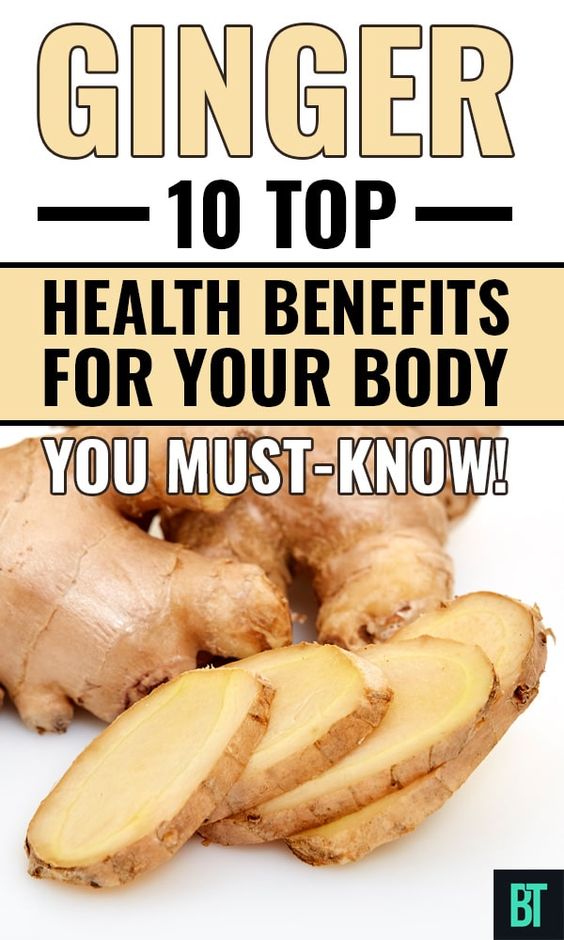Ginger has been a popular spice in Asian cuisine for many decades and was introduced to the west and used in gingerbread, ginger snaps, ginger ale and pumpkin pie. But that is not all the ginger has to offer.
On top of being used in cooking and baking, ginger has many health benefits and we are going to discuss these health benefits of ginger in this article.
Ginger has over 400 chemically active ingredients and is a good source of potassium, magnesium, manganese, copper and vitamin B6.
It has been used for many generations to treat digestive issues, coughing, headache, sinus congestion, cold, flu and fever. On top of all those health benefits, it is also known to be helpful for inflammatory diseases such as arthritis and rheumatism. It has anti-inflammatory, antibacterial and antifungal elements and is known as a blood thinning agent.
The ginger we eat is the underground rhizome of the ginger plant. The flesh can be white, yellow or reddish in color and is covered by a brown skin. Depending on the variety and the age of the rhizome, the skin can be thin or thick.
Ginger is available in many forms; fresh, powdered, crystallized, candied and pickled. Fresh ginger will keep in the refrigerator for 3 weeks if kept unpeeled. You can keep the ginger in the freezer and shave off what you need to add to your cooking. This way it will keep up to 6 months.
Health Benefits of Ginger Root
For gastrointestinal problems: Ginger has been known to help motion sickness and vomiting. A double-blind study done recently revealed that ginger was superior to popular medicine (Dramamine) in preventing sea sickness.
Morning sickness: The anti-vomiting action is especially important to women suffering from morning sickness during pregnancy. Unlike many prescribed medications, ginger is safe with only a small amount needed to achieve the effect.
Blood thinning properties are being studied and cholesterol reducing properties are being examined.
For Inflammation: Ginger inhibits two enzymes that play a major part in chronic inflammations and help the body heal after an inflammation has occurred. A compound called Gingerols is believed to be the one responsible for the relief from arthritis and rheumatoid pain and increased level of mobility in sufferers.
For pain: Ginger has analgesic properties. It has been used in treating headaches and ginger tea can reduce the pain and nausea associated with migraines. For some people, it can actually stop a migraine if it is taken at the beginning stages. A warm compress can ease the pain of bruises, strains and sprains.
For heartburn: Drinking ginger tea reduces heartburn.
For coughs: Ginger has cough-reducing properties. It helps thin the bronchial mucus and moves it out of the lungs.
For burns: Fresh ginger juice applied to a burn will relieve pain, reduce blistering and inflammations and provide antibacterial protection.
For sexual dysfunction: Some believe ginger has aphrodisiac properties because it stimulates the circulation and normalizes testosterone levels.
For immune-boosting: Ginger can increase sweating which is helpful during colds and flu. It is more than just detoxification of the body but the ginger provides protection against invading microorganisms and fungus.
Basic Ginger Recipes
For colds and flu: Prepare a tea from the ginger root by boiling 4-5 slivers of the root in water for 3 minutes. Strain. Add honey to the mix and drink two cups a day.
As an inhaler: boil water in a shallow pot together with a few pieces of ginger. Cover your head with a towel and inhale the vapor. Adding a few drops of Eucalyptus oil will help you breath easier when congested.
For compress: place 1 cup of fresh ginger with 1 tablespoon of powdered cinnamon in two cups of water and let simmer for 5 minutes. Remove from heat and allow to steep for another 15 minutes. Soak a washcloth in the mixture and place on the injured area. This is most effective if done 2-3 times a day.
An alternative way for aching joints is to grind about 2 inches of the root into a paste, add cinnamon as above and a bit of water if needed to make it into a paste. Apply on the painful area, cover with plastic wrap and a moist, warm towel. Let the towel cool, remove and wash the area.



